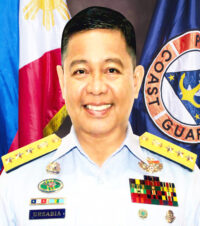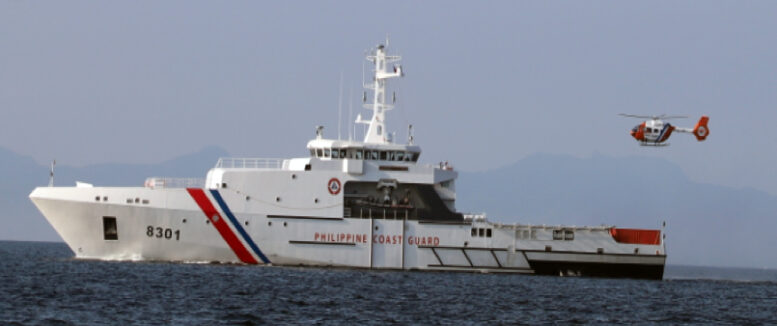The recently installed Commandant of the Philippine Coast Guard, VICE ADMIRAL GEORGE URSABIA PCG is leading the charge towards the future direction of the organization. He is revitalizing the formulation of strategic plans that ensures PCG operations, organizational and capability development are in support of the ends of higher-level national policies, fulfill its five (5) primary mandates, and provide an authoritative foundation for the future transformation of the Coast Guard.
 Alignment of PCG Strategic Planning with the 27th C, PCG Guidance. During his assumption as the 27th Commandant of the Philippine Coast Guard on 02-June-2020, VICE ADMIRAL GEORGE V URSABIA JR outlined his guidance for the organization. He emphasized the need to improve the performance of the service’s mandate on maritime law enforcement, maritime security, maritime safety, maritime search and rescue, and marine environment protection by recruiting specialized personnel, and by training its men and women on the utilization of the latest equipment to counter maritime terrorism, piracy, kidnap-for-ransom, smuggling, and other threats to security, most especially in the ZamBaSulTa (Zamboanga, Basilan, Sulu, and Tawi-Tawi) region. He also called for the procurement of necessary assets to improve the PCG’s humanitarian assistance and disaster response operations to include passenger ships and roll-on / roll-off (RORO) vessels.
Alignment of PCG Strategic Planning with the 27th C, PCG Guidance. During his assumption as the 27th Commandant of the Philippine Coast Guard on 02-June-2020, VICE ADMIRAL GEORGE V URSABIA JR outlined his guidance for the organization. He emphasized the need to improve the performance of the service’s mandate on maritime law enforcement, maritime security, maritime safety, maritime search and rescue, and marine environment protection by recruiting specialized personnel, and by training its men and women on the utilization of the latest equipment to counter maritime terrorism, piracy, kidnap-for-ransom, smuggling, and other threats to security, most especially in the ZamBaSulTa (Zamboanga, Basilan, Sulu, and Tawi-Tawi) region. He also called for the procurement of necessary assets to improve the PCG’s humanitarian assistance and disaster response operations to include passenger ships and roll-on / roll-off (RORO) vessels.
To implement the guidance of the CPCG, it is worth examining how the PCG strategic plans align in relation to the former.
The PCG Maritime Strategy (MS) is critically important for the realization of C, PCG’s guidance in two aspects: first, it serves as a “bridge” that links all Coast Guard activities towards attainment of national policy goals and objectives; second, it provides a coherent framework that links operations with organizational and capability development.
From the perspective of Ends-Ways-Means, the PCG MS is broad and versatile enough to provide an ideal fit to the Commandant’s guidance. Its Ends or objectives directly address the five operational mandates of the PCG. An important Way or strategy that addresses the operational mandates calls for joint, rapid, multidimensional response that are strategically positioned with robust C3I. For the Means, the PCG MS advances a Balanced Force which creates the ideal balance between capabilities, bases and support systems and above all, acquiring and developing the human resources of the highest levels of professionalism to be able to operate them. In addition, the Means provides a vision of what a modern Coast Guard would be like.
The Strategic Development Plan (SDP) is a detailed organizational development plan that provides specific programs along PCG functional concerns. Since C, PCG laid the stress on human resource development through recruitment and proper training of personnel, it would be interesting to note how this relates to the current HRD initiative. Examining the Coast Guard’s SDP, Strategic Objective 7 calls for a competent and well equipped work force. In response, on human resource development, the Office of the Assistant Chief of Coast Guard Staff for Personnel, CG-1 came up with the Strategic Initiative, Integrated Human Resource Management Program. Their main elements seek to improve recruitment (both in quantity and quality), career development, merit-based promotion, professional education and training, retirement policy and quality of life. All these elements actually contribute to the successful realization of the C, PCG’s intent as their end state would be creating excellent professional and long-service Coast Guard men and women.
On C, PCG’s guidance on capability development thrusts, under the Acquisition Plan, the PCG intends to develop an integrated force structure in which capability is linked to mission needs. This will be achieved by acquiring a balanced multi-role response force comprising a fleet of vessels supported by complementary air assets which will fulfill patrol, support and response functions across the entire area of responsibility. The main assets in the Plan that conform to and support the C, PCG’s intent include Ocean Patrol Multi-Role Response Vessels (MRRV), Off-Shore Patrol Vessels, smaller MRRVs, Fast Patrol Boats and Strategic Sealift Vessels. It goes without saying that the Acquisition Plan also provides for a host of smaller patrol craft as support systems. Overall, its implementation would capacitate the PCG to realize the Commandant’s guidance.
Current Thrusts. The most important and immediate task is the formulation of the Philippine Coast Guard Maritime Strategy (PCG MS). This strategic document provides the overarching framework and strategic intent that guides all actions of the PCG organization to fulfill its mandates. It serves as a blueprint that will link strategic concepts; and forces design and operational capabilities to meet strategic objectives toward enhancing its core functions. In addition, it serves as the PCG’s inputs to higher-level national policies and strategies. Likewise, the PCG MS functions as a strategic foundation to achieve the future PCG organizational structure.
This strategy is anchored on the concept called Unified Whole of Maritime Nation Approach on the following principles: 1) The Philippines is a maritime nation whose everyday life and future is tied to the protection and preservation of the sea; 2) Unity of action and cooperative engagements with all maritime stakeholders shall be the hallmark of PCG operations and other activities in the fulfillment of its mandate; 3) As a lead maritime agency, the PCG will constantly and systematically pursue capacity building not only in material capabilities but more importantly in human resources to successfully meet current challenges and properly equip the organization for the future.
The importance of the PCG MS cannot be underemphasized as its crafting will equip the organization with the proper bridge between its mandates and subordinate plans such as the PCG Modernization Plan, PCG Strategic Development Plan, Acquisition Plan, and the Strategic Basing Plan.
The PCG Modernization Plan for its part is the blueprint for the determination, acquisition and integration of new capabilities that will fuel the organization’s future in the areas of Capability, Materiel and Technology; Human Resource; Bases and Support Systems; Force Restructuring and Organization; and Doctrines Development. The Strategic Development Plan is the broad organizational transformation roadmap that would ensure the attainment of the PCG vision of a world class guardian of the sea committed to save lives, ensure safe maritime transport, cleaner seas, and secure maritime jurisdiction by 2028. The Acquisition Plan provides the development framework to upgrade current assets and capabilities to meet the mandates of the PCG and at the same time extend their utility to cope with future challenges. To maximize operational utilization, efficiency and serviceability of current and future capabilities, the Strategic Basing Plan serves as the blueprint for the selection of new and development of current bases to ensure complete facilities and support systems.
Mapping the Future Philippine Coast Guard. Guided by the PCG MS, as the end results of its subordinate plans and as the realization of the Philippine Coast Guard Vision, it is also formulating the concept of the future organization. This Philippine Coast Guard of Tomorrow is a force with the following attributes: Comprehensive Maritime Domain Awareness; Network Centric; Joint, Rapid, Persistent and Scalable; and, Balanced Organization.
Given that the Philippine maritime area of responsibility has dramatically increased by several orders of magnitude with also a corresponding increase in the numbers and scale of security challenges, the PCG needs first and foremost to improve its domain awareness. Comprehensive Maritime Domain Awareness will equip the PCG with a real-time operational picture of the Philippine maritime area of responsibility, especially challenges to safety, the environment, peace and order and security.
The critical requirement for Comprehensive Maritime Domain Awareness is a Network Centric Organization. A network centric PCG possesses two characteristics that would bring it to transformative levels of effectiveness. The first is a comprehensive common operational picture where sensors will be linked with headquarters and vessels (surface and air), creating a shared real-time picture of the maritime domain, thereby enhancing situational awareness and interoperability. The second is a rapid sensor to responder interface where response units would be able to quickly transition between each phase of the Observe-Orient-Decide-Act (OODA) Cycle.
A Joint, Rapid, Persistent and Scalable Organization will equip the future PCG with a versatile air and surface capabilities. The air capabilities will provide the rapid response element while the surface capabilities will provide the persistent element. As these are network centric with a common operational picture, they can properly tailor and calibrate their response to the severity of the challenge, thereby making them scalable and efficient.
Last but not the least, the future PCG will be a Balanced Organization. A balanced Coast Guard is the sum of the right mix of capabilities, organization, operational capacity and strategic depth. Operational balance is the outcome of shaping a force structure to develop particular capabilities that are mutually complementing. Organizational balance based on the principle of operational pull, right size and right skill while having enough capacity for future expansion. Strategic depth for its part acknowledges the importance of bases and support systems to enable the generation, employment and sustainment of PCG operations.
With the new Commandant of the Philippine Coast Guard leading the way, the prospects for the Philippine Coast Guard’s strategy development are indeed exhilarating and optimistic.
